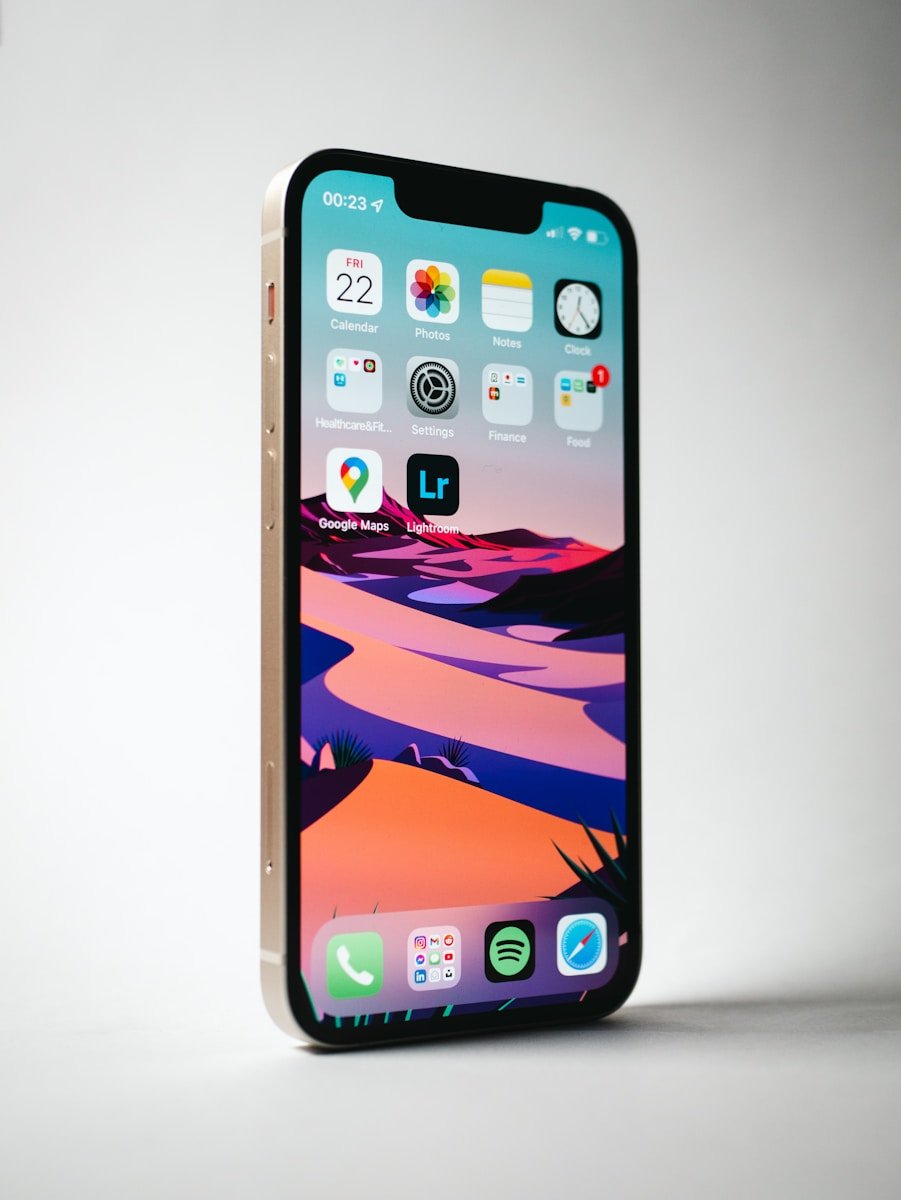Have you ever wanted to identify a plant in your garden or learn about a landmark in a photo? Apple’s Visual Look Up is a helpful tool that turns your iPhone or iPad into a smart scanner. This feature lets you quickly search for information about objects in your pictures without typing long descriptions.
Visual Look Up works by tapping the Info button on any photo and looking for a sparkly icon, which means your device recognizes something in the image. When you tap this icon, your Apple device will show you details about plants, landmarks, art, pets, and more things in your photos. The tool is available in countries where English is a primary language with some exceptions.
To use this feature, make sure it’s turned on in your settings. If it’s not working, you might need to enable “Show in Look Up” in your Siri & Search settings. Visual Look Up uses image recognition technology to match what’s in your photos with information from the internet, making it easy to learn more about the world around you.
What Is Visual Look Up?
Visual Look Up is an AI-powered feature built into Apple’s Photos app (and sometimes Safari and Messages) that recognizes subjects in your images — such as pets, plants, food, landmarks, or symbols — and provides information, links, or Siri Knowledge results.
It’s available on:
- iPhone and iPad (iOS/iPadOS 15 and later)
- Mac (macOS Ventura and later)
🔍 How to Use Visual Look Up on iPhone or iPad
✅ Step 1: Check Your Requirements
Make sure:
- Your device is running iOS 17 or later.
- You have an internet connection.
- Siri & Search is enabled under Settings → Siri & Search → Content from Apple → Show in Look Up.
✅ Step 2: Open a Photo or Pause a Video
- Open the Photos app.
- Choose a photo or pause a video with a recognizable subject (like a dog, flower, or landmark).
✅ Step 3: Tap the Visual Look Up Icon
- Look for a small sparkle icon (✨) or an info (ℹ️) button at the bottom of the screen.
- If the photo contains something recognizable, the icon may change — for example:
- 🐶 Paw print → Pet recognition
- 🌿 Leaf → Plant recognition
- 🏛️ Building → Landmark recognition
- 🍽️ Fork and knife → Food recognition
- 💎 Gem → Art or object recognition
✅ Step 4: View the Results
Tap the icon → select Look Up.
You’ll see:
- Siri Knowledge cards
- Web results
- Suggested websites
- Maps locations (for landmarks)
- Breed or species info (for animals or plants)
✅ Step 5: Try It in Other Apps
Visual Look Up also works in:
- Messages → Tap a shared image → Info icon → Look Up.
- Safari → Long-press an image → Look Up.
Source: Apple Support – How to use Visual Look Up on iPhone and Apple Support – Visual Look Up on Mac
💻 How to Use Visual Look Up on Mac
- Open the Photos app.
- Double-click a photo.
- Click the Visual Look Up button (the “i” or sparkle icon) in the toolbar.
- Click Look Up to see results like animal breeds, plants, or landmarks.
🧠 What You Can Identify with Visual Look Up
Depending on your iOS/macOS version, Visual Look Up can recognize:
- Plants and flowers 🌸
- Animals and pet breeds 🐕
- Landmarks and monuments 🏰
- Art, books, and media 🎨
- Food and dishes 🍕
- Symbols and signs 🚸
Newer versions (iOS 17+) can even identify subjects in paused video frames and provide recipe suggestions for food images.
🧩 Tips and Troubleshooting
- If the Visual Look Up icon doesn’t appear:
- Ensure your device is updated.
- Check that the photo is clear and well-lit.
- Confirm Siri & Search settings are enabled.
- The feature may not work offline — it requires Apple’s cloud-based image analysis.
✅ Summary
| Feature | Works On | Example |
|---|---|---|
| Plant recognition | iPhone, iPad, Mac | Identify a flower species |
| Pet recognition | iPhone, iPad, Mac | Learn your dog’s breed |
| Landmark recognition | iPhone, iPad, Mac | Get info about a monument |
| Food recognition | iPhone, iPad | Find recipes for a dish |
| Symbol recognition | iPhone, iPad | Decode icons or labels |
Key Takeaways
- Visual Look Up identifies objects in photos when you tap the Info button and the sparkly icon.
- You can use Visual Look Up to get information about plants, landmarks, art, and animals in your photos.
- To make Visual Look Up work, check that “Show in Look Up” is enabled in your Siri & Search settings.
Understanding Apple’s Visual Look Up
Apple’s Visual Look Up is a powerful feature that helps users identify objects, landmarks, plants, and other items in their photos. This tool uses advanced image recognition technology to provide information about what’s in your pictures with just a tap.
The Technology Behind Visual Look Up
Visual Look Up runs on machine learning algorithms that can recognize patterns in images. Apple built this system to work directly on your device, which helps protect your privacy since photos don’t need to be uploaded to external servers for analysis.
The feature works by scanning images and comparing what it sees against a large database of known objects. When you use Visual Look Up, your iPhone processes the image locally using the Neural Engine in Apple’s chips.
This technology can identify different categories like:
- Plants and flowers
- Popular landmarks
- Books
- Artwork
- Pets and animals
- Birds
- Insects
- Statues
The system even works with laundry symbols to help you understand those confusing washing instructions on clothing tags.
Comparing Visual Look Up with Google Lens
While Apple’s Visual Look Up is impressive, Google Lens has been offering similar features for longer. Google’s tool can identify more categories of objects and has broader language support.
Google Lens and Google Photos have offered image recognition for years, while Visual Look Up is relatively newer. Google’s solution works across both Android and iOS devices, making it more universally accessible.
However, Apple’s solution offers better privacy since processing happens on-device. Visual Look Up also integrates seamlessly with the Photos app, making it more convenient for iPhone users.
The accuracy of both tools depends on the object being identified, but both have gotten quite good at recognizing common items. Apple’s system excels at identifying plants and landmarks with impressive detail.
Supported iOS Versions for Visual Look Up
Visual Look Up first appeared in iOS 15, released in 2021. The feature has seen significant improvements with each iOS update since then.
iOS 15 introduced the basic functionality, allowing users to identify plants, landmarks, books, and art. With iOS 16, Apple expanded the capabilities to include birds, insects, and statues.
The latest improvements came with iOS 17, which added the ability to recognize laundry symbols and more objects.
Visual Look Up is available on iPhone models with A12 Bionic chips or newer, which includes iPhone XS and later models. The feature is currently available in countries where English is a primary language, with some exceptions like Ireland and New Zealand.
Getting Started with Visual Look Up
Visual Look Up is a powerful feature that helps you identify objects, plants, landmarks, and more in your photos. It uses AI to analyze images and provide useful information about what’s in them.
Accessing Visual Look Up in Photos App
To use Visual Look Up on your iPhone, open the Photos app and select an image that contains an object you want to identify. If Visual Look Up recognizes something in your photo, you’ll see a sparkle icon on the image or an Info button (i) at the bottom of the screen.
Tap the starred Info button, then tap Look Up at the top of the photo information. This will show you the Visual Look Up results.
You can close the results by tapping the Close button when you’re done. The feature works seamlessly with the Photos app interface.
For quick identification, you can also:
- Swipe up on a photo to see information
- Look for the sparkle icon on recognized objects
- Tap directly on the object you want to identify
Requirements for Using Visual Look Up
Visual Look Up requires a compatible iPhone model running iOS 15 or later. The feature works best with clear, well-lit photos of recognizable objects.
To make sure Visual Look Up is enabled, check your settings. Go to Settings > Siri & Search > Content from Apple and make sure Show in Look Up is toggled on.
Visual Look Up can identify various objects including:
- Plants and flowers
- Landmarks and buildings
- Artwork
- Animals and pets
- Books
- Laundry symbols
The feature needs an internet connection to work properly, as it uses Apple’s servers to process and identify objects in your photos.
Exploring Visual Look Up Capabilities
Visual Look Up is a powerful iPhone feature that lets you identify objects, landmarks, plants, animals, and more from your photos. It uses AI to recognize what’s in your pictures and gives you useful information about what you see.
Identifying Plants and Flowers
When you spot an interesting plant or flower, Visual Look Up can tell you what it is. This feature works with both common and rare plant species. To use it:
- Open a photo with a plant
- Tap the Info button at the bottom
- Look for the leaf icon that appears on the image
- Tap the icon to see details about the plant
The system identifies many garden flowers, trees, houseplants, and wild plants. It shows the common name, scientific name, and basic care tips. This helps gardeners learn about new plants and hikers identify unknown species on trails.
Many users find this helpful for identifying poisonous plants to avoid or finding out if a plant is safe for pets.
Discovering Landmark Information
Visual Look Up makes traveling more informative by identifying famous buildings and landmarks. When a user takes a photo of a monument or historic site, the feature provides helpful context.
To get landmark information:
- Open a photo of a landmark in full screen
- Look for the starred Info button
- Tap “Look Up” at the top of the photo information
The system provides the landmark’s name, location, historical background, and architectural details. This works for world-famous structures like the Eiffel Tower and smaller local monuments.
Some users create travel journals by saving the lookup information alongside their vacation photos. The feature also helps students learning about architecture or history by providing quick facts about important structures.
Recognizing Animals and Pets
Visual Look Up excels at identifying different animal species, from common pets to wildlife. This feature helps nature enthusiasts and pet owners learn more about animals they photograph.
When using Look Up on animal photos:
- Open a photo containing an animal
- Tap the Info button with stars
- Tap the paw icon that appears
The tool shows the animal’s species, breed information for domesticated animals, and interesting facts. Dog and cat owners can confirm their pet’s breed or learn about mixed breed characteristics.
Wildlife photographers benefit from quick species identification while in the field. The system recognizes birds, mammals, reptiles, and many other animal groups with impressive accuracy.
Parents find this feature educational for children who want to learn about animals they see at the zoo or in nature.
Scanning Food for Health and Nutritional Insights
Visual Look Up can identify many food items and dishes, making it helpful for meal planning and dietary tracking. Users can learn about unfamiliar foods or get nutritional information about their meals.
To use Visual Look Up for food:
- Take a clear photo of a food item
- Open the photo and tap the Info button
- Look for the food icon and tap it
The feature provides details like common ingredients, calorie estimates, and nutritional highlights. It works best with distinct food items and popular dishes from various cuisines.
People with dietary restrictions find this helpful when trying new foods. The system can flag potential allergens in some dishes.
Health-conscious users appreciate getting quick nutritional information without having to search manually. The tool continues to improve with each iOS update, recognizing more foods with greater accuracy.
Maximizing the Use of Visual Look Up
Apple’s Visual Look Up feature helps you identify objects in your photos with a few simple taps. Getting the most from this tool requires knowing how to handle common problems and how to improve its accuracy.
Troubleshooting Common Issues
If Visual Look Up isn’t working on your iPhone, check that you’re using iOS 15 or later. Not all devices support this feature.
Make sure your photos are clear and well-lit. Blurry or dark images make it harder for the system to identify objects correctly.
Check your internet connection. Visual Look Up needs an active connection to process images.
If the feature still doesn’t work, try restarting the Photos app. Close it completely and open it again.
You might need to provide consent for the feature to access your photos. Go to Settings > Privacy > Photos and ensure the proper permissions are set.
Try updating your iOS to the latest version. Apple regularly improves Visual Look Up with updates.
Enhancing Visual Recognition through User Input
Take photos with good lighting and minimal background clutter to help Visual Look Up work better.
Position the main subject in the center of the frame. This makes it easier for the system to focus on what you want identified.
When using Visual Look Up, tap directly on the object you want to identify. This helps the system understand exactly what you’re asking about.
For better results with plants and animals, capture multiple angles of the same subject. This gives the system more information to work with.
If you’re trying to identify landmarks, include distinctive features in your photo. Capturing unique aspects helps the system recognize famous places.
To fix Visual Look Up recognition issues, try cropping your photo to focus more on the main subject before analysis.
Privacy and Consent Considerations
When using Apple’s Visual Look Up feature, it’s important to understand how your data is handled and what control you have over it. Privacy protections are built into the system, but knowing how to manage them gives you more control over your personal information.
Understanding Data Usage in Visual Look Up
Visual Look Up processes images directly on your device in most cases. This on-device processing means your photos don’t need to leave your iPhone for basic object recognition.
However, the Enhanced Visual Search feature works differently. This tool can identify landmarks and points of interest in your photos, but may send data to Apple’s servers for processing. According to recent reports, this feature privately matches places in your photos to known locations.
When you see the Data and Privacy icon in iOS, pay attention to it. This icon indicates when personal data might be shared and how it will be used.
Look for the small paw print or bug icon in your Visual Look Up results—these tell you what type of object has been identified.
Managing Consent for Image Processing
You have control over how Visual Look Up processes your images. If you’re concerned about privacy, you can disable enhanced features.
To turn off Enhanced Visual Search:
- Open the Settings app
- Tap on Apps
- Select Photos
- Tap “Disable Enhanced Visual Search”
This setting was introduced in iOS 18 and gives you more granular control over how your photos are analyzed.
When using Visual Look Up for the first time, your device will ask for permission. You can always change these settings later if you change your mind.
The basic Visual Look Up feature (for identifying plants, bugs, and common objects) works without sending data to servers. This local machine learning approach keeps your personal photos private.
Visual Look Up in Videos and Live Photos
Apple’s Visual Look Up feature now works beyond still images, allowing you to identify objects and information in videos and Live Photos. This powerful tool makes it easier to learn about what you see in all your captured moments.
How Visual Look Up Works with Videos
Using Visual Look Up with videos is straightforward. When watching a video in the Photos app, simply pause on any frame that contains something you want to identify. Tap the Info button at the bottom of the screen – if it has a star symbol around it, Visual Look Up is available for that frame.
The feature can recognize various subjects including:
- Landmarks and notable buildings
- Plants and flowers
- Breeds of dogs and cats
- Works of art and sculptures
- Books and other media
Once you tap the starred Info button, look for the Look Up option at the top of the photo information. Tap on the highlighted subject in the paused frame to view details about what’s recognized.
Exploring Visual Look Up in Live Photos
Live Photos capture 1.5 seconds before and after you take a picture, and Visual Look Up works throughout this motion. To use this feature with Live Photos, open the Live Photo in full screen in your Photos app.
Look for the starred Info button (i) – this indicates Visual Look Up has detected something recognizable. Tap this button, then tap on the icon that appears either on the photo itself or below it.
You can also play the Live Photo and pause at different moments to identify various objects that appear. This works particularly well for moving subjects like animals or changing scenery.
If Visual Look Up doesn’t seem to work, check that you’ve enabled “Show in Look Up” under “Content from Apple” in your Siri & Search settings.
Frequently Asked Questions
Visual Look Up offers several ways to identify objects in your photos. Most questions focus on setup, compatibility, and practical usage methods on Apple devices.
What steps are required to activate Visual Look Up on an iPhone?
Visual Look Up doesn’t need separate activation. It works automatically on compatible iPhones with iOS 15 or newer. Just make sure your device is updated to the latest iOS version.
The feature is built into the Photos app. No special settings need to be adjusted to start using it.
Which iOS versions support the Visual Look Up feature?
Visual Look Up was introduced with iOS 15. It continues to be available and improved in iOS 16 and newer versions.
Older devices running iOS 14 or earlier can’t use this feature. You’ll need to update your software to access Visual Look Up.
Are there any specific requirements for using Apple’s Visual Look Up with photos?
Photos need to contain recognizable objects like landmarks, plants, pets, or art. The feature works best with clear, well-lit images that have a distinct subject.
Your iPhone needs an A12 Bionic chip or newer. This means iPhone XS or later models can use Visual Look Up.
Internet connection is also required. Visual Look Up uses online databases to match and identify objects in your photos.
How can I access Visual Look Up to identify objects in images on my device?
Open a photo in the Photos app. If Visual Look Up detects an identifiable object, you’ll see a sparkly Info button (i with stars) at the bottom of the screen.
Tap this button, then tap “Look Up” at the top of the photo information panel. This will show you Visual Look Up results about the object.
For some items, you can also swipe up on the photo or tap the sparkly icon that appears directly on the object in the image.
Can Visual Look Up be used with all photos in my iPhone library?
No, Visual Look Up only works with specific types of content. It can identify plants, landmarks, pets, art, and similar objects.
Photos must be clear enough for the system to recognize objects. Blurry images or photos with poor lighting might not trigger the feature.
The system doesn’t identify people or text. For text recognition, use the separate Live Text feature instead.
What is the process for using Visual Look Up for live camera analysis?
Currently, Visual Look Up doesn’t work with the live camera view. You need to take a photo first and then view it in the Photos app.
After taking a picture, open it in Photos and look for the sparkly Info icon. If it appears, tap it to see the Visual Look Up options.
Apple’s separate Live Text feature does work with the camera app for real-time text recognition, but this is different from Visual Look Up.







